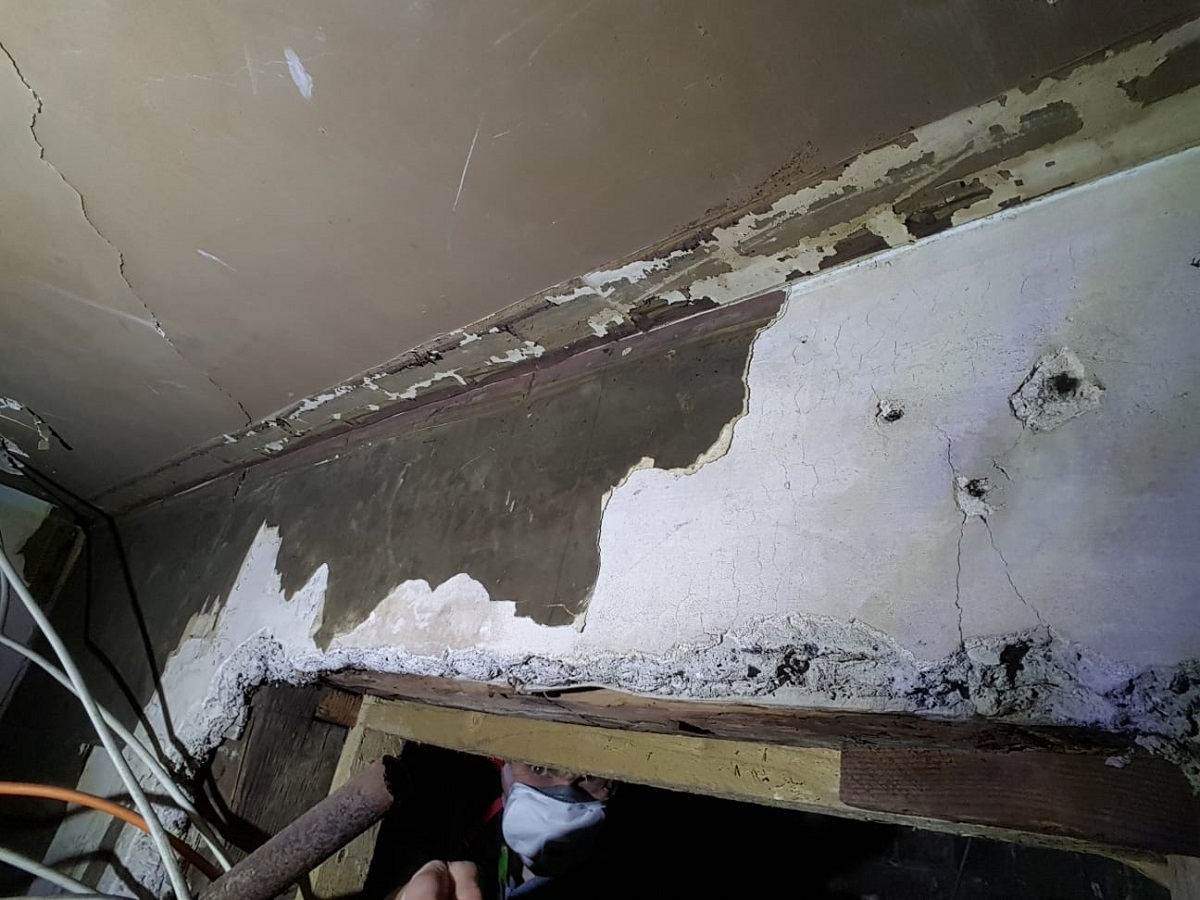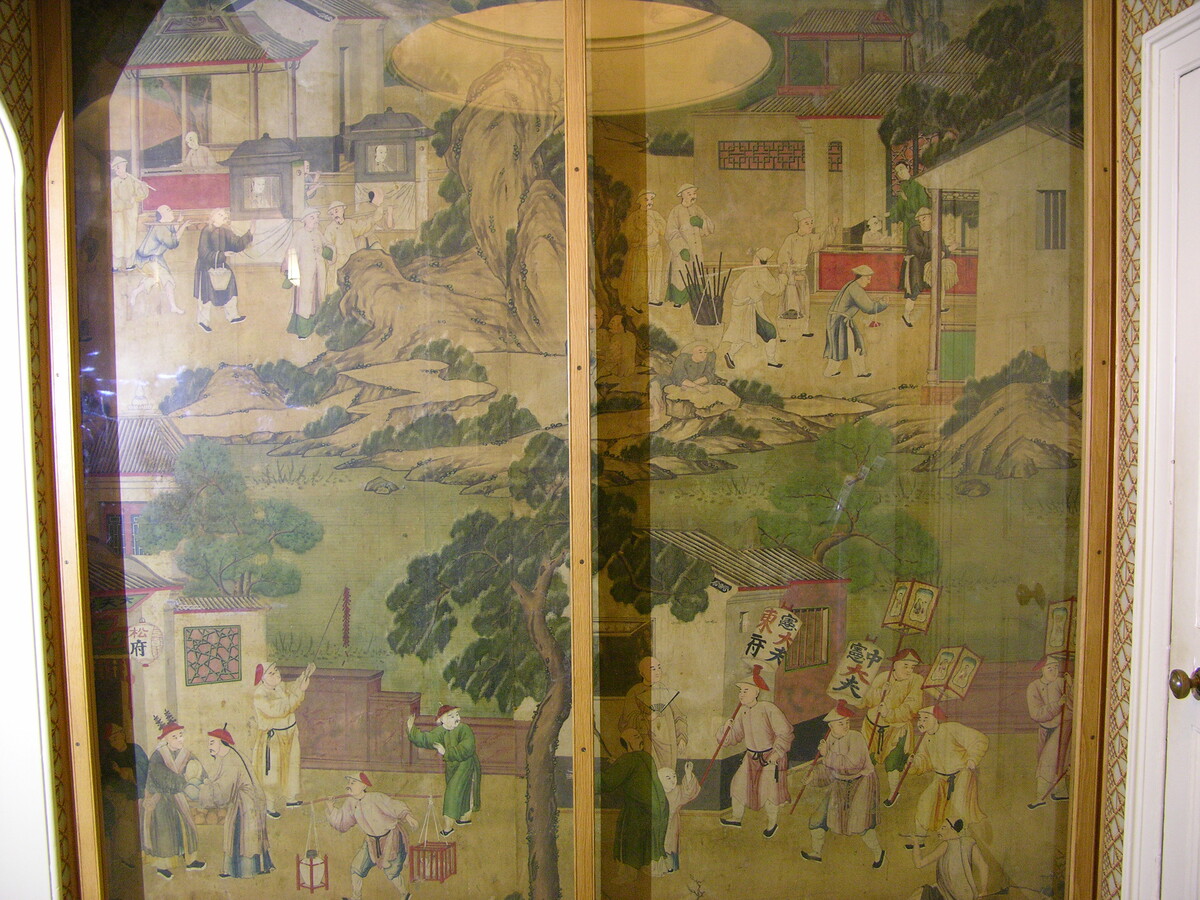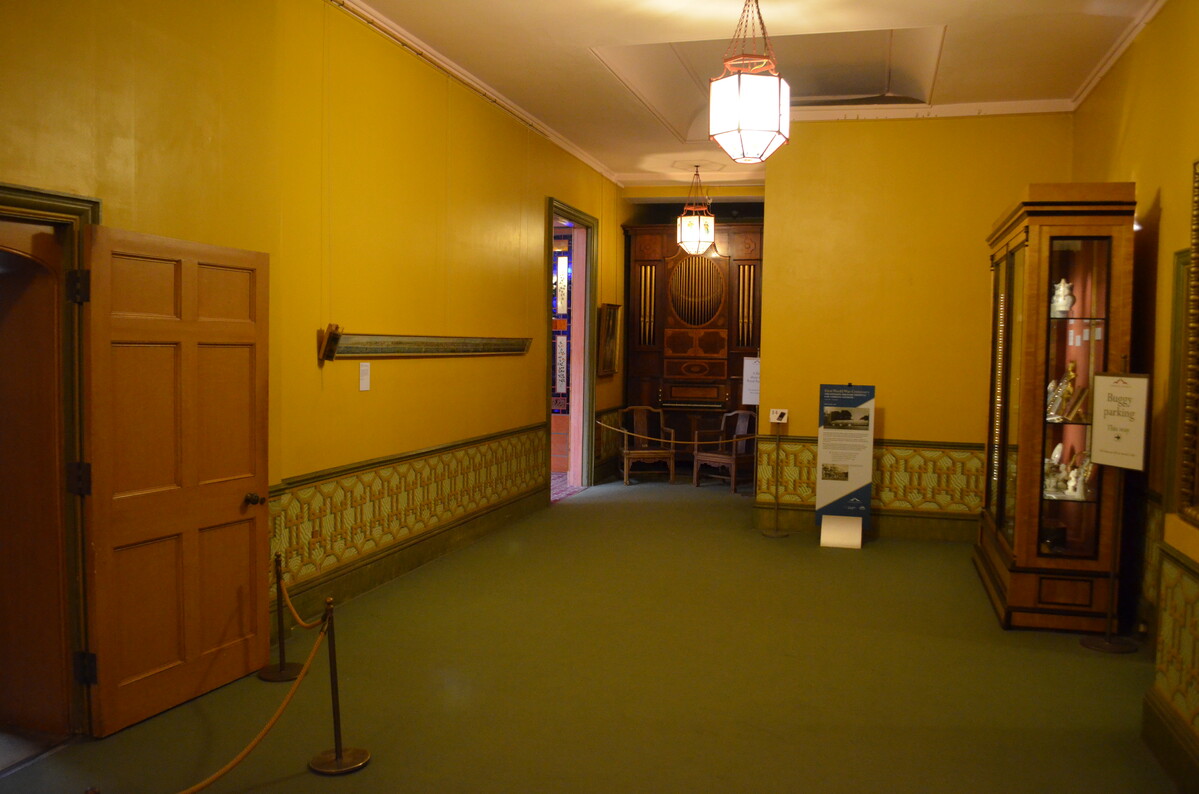Buried Treasure at the Royal Pavilion

Paper Conservator, Amy Junker Heslip, shares an exciting behind the scenes discovery at the Royal Pavilion
The Royal Pavilion is a fascinating building to work in and, with the many decorative schemes installed by George IV, and then a further array of designs and changes under municipal ownership from 1850 onward, the building is literally layered in history.
My research into the Adelaide Corridor and the Chinese wallpaper in the Pavilion continues to be an interesting voyage and has often felt like I was following a treasure hunt with several clues on the way leading me to some exciting discoveries.
The Adelaide Corridor Chinese Wallpaper is located in a long, narrow corridor at the north end of the Royal Pavilion. It was hung around 1818-23 and was part of the last decorative scheme installed in the Pavilion, coinciding with the completion of the ‘New North buildings’. It is also reported to be one of the few decorative features that has remained in its original location since its installation. This is possibly because it was too difficult to remove as it was adhered directly to the walls, unlike the more portable paper on a hessian carrier that was tacked to the wall.
The location of this opulent and interesting wallpaper in a dim and narrow corridor has always puzzled me, but on reflection it could viewed as not out of character of George IVs ‘nothing is too much’ designs throughout the Pavilion. Further reading into the history of the building, however, has shed a light on this design and indicated the previous existence of a Chinese staircase linking the end of this corridor to the floor below (the Yellow Anteroom outside the King’s Apartments).

The very helpfully transcribed committee minutes for the Pavilion in municipal times refer to a Chinese paper on this staircase in 1861, amongst other entries, and an agreement to have this area dismantled is noted in 1865 (Vol.4, p. 246, 26 June 1865). The reason for the removal of the staircase was so that the layout of the floor below would be better suited to the new use of the building. The coffering in the ceiling that is visible in the Ante Room to the King’s Apartments, was introduced after removal of the Chinese Staircase.
While looking though my predecessor’s very helpful history files regarding these wallpapers, I saw a reference to a wallpaper discovered in the 1980s when an electrician came to carry out work in a ceiling void in a room referred to on plans as ‘the switchgear room’. The electrician was reported to have come out of a ceiling void holding some fragments of Chinese wallpaper, leading to a further investigation and some photos being taken. These photos appear to show the top section of the Chinese wallpaper on the top of the staircase, remaining in a ceiling void when this was blocked up and the staircase demolished. A very exciting discovery indeed.

Instructions in the file were as follows: ‘in switchgear room, go up ladder, and look through hole in west to see Chinese wallpaper.’ Markings on old floor plans led me to several false starts when trying to find this location. Only when I methodically went through these files with my very helpful volunteer did we manage to find a more plausible location.
The space was discovered located in a small, enclosed space between the Music Room and Yellow Anteroom to the King’s Apartments, with a fake ceiling made of plaster board, and hatches for access to the smoke alarms. I contacted my intrepid colleague Kevin Faithfull, (Carpentry Technician and Locksmith) who is very familiar with a large number of the Pavilion’s voids and crawl spaces , and he very generously agreed to lead me into this possible space and take a look with me.

It was an exciting discovery to see this Chinese paper preserved in situ in a rather inaccessible void above the Victorian ceiling on what appears to be the top part of the staircase wall itself. The existence of these papers brings to life the Adelaide corridor, where it would have continued along and down a staircase. It must have looked dazzling!
Sadly, Kevin and I are not very adept photographers and so a return visit will need to be rescheduled to take more helpful images and I look forward to trying to identify these fragments.
Many thanks to
Gordon Grant for his very helpful notes on the Chinese staircase and his own research and transcriptions from the Committee Minutes
My predecessor, Paper Conservator Heather Woods, for her very detailed documentation
Grateful thanks to very helpful volunteer, now retired prior Painting Conservator, Janet Brough.